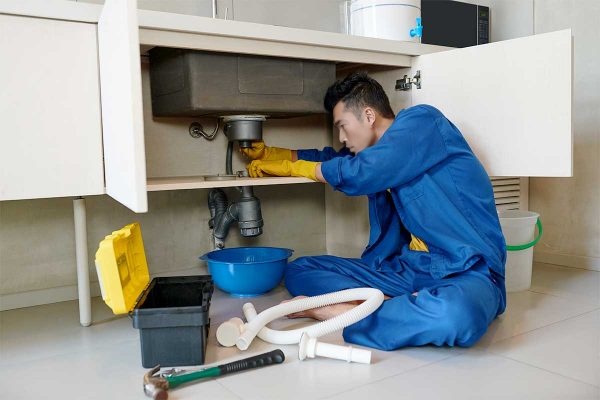Floor traps are an indispensable part of your homes, catching all the dirt and other particles that could clog up your drainage system. However, over time, there is the development of choke points inside the traps that impede the proper flow of water, thus leading to odors and flooding problems. Clearing choked floor traps is an indispensable knowledge for anyone willing to maintain a house where everything would work properly. Be it a shower drain clogged up or a choke in the kitchen floor trap, a little knowledge of techniques and tools can make the task quick and easy.
This article describes expert handyman tips and practical methods for clearing a floor trap choke, covering everything from basic DIY techniques to essential tools and preventive maintenance tips.
Why Do Floor Traps Block?
A floor trap is bound to get clogged with its purpose of catching solid material objects, debris, and hair before it reaches the main drain. While very helpful in avoiding further blockages, these traps build up a lot of material inside them over time. The possible causes for chokes in floor traps include:
- Hair and soap residue: These usually accumulate in bathroom traps to cause blockages.
- Food particles and grease: These are the most common line blockages that appear in your trap in your kitchen floor. Over time, these elements thicken and turn into solid masses.
- Dirt and sediment: Mudwater or even outdoor debris is the cause of drain problems around areas of your laundry and garage.
These do not allow water to flow freely, and slow down the rate of drainage. Additionally, they emanate bad odors if left unattended.
Signs of a frozen basement
Knowing the early signs of a clogged floor pipe can save you from expensive drainage problems. Here’s what to watch out for.
Slow drainage: The drains are usually surrounded by long stretches of water.
Unpleasant smell: Decaying organic matter can cause foul odors to pass through the drains.
Wheezing: This usually indicates that air is being forced through a partially blocked space.
Backflow: Severe clogging of sewage causes sewage to flow back into the sewer system.
If you notice any of these symptoms, it’s time to take swift action to clean the choke.
Essential Equipment to Clear Floor Trap Chokes
There are certain tools that can make clearing up a clogged floor trap easy and quick. Let’s look at some of the essential tools every handyman or DIY enthusiast should have:
- Plunger: Good for minor blockages, a plunger can remove soft blockages.
- Drain Snake or Auger: This flexible tool can go deep inside the pipes to remove rubble and other blockages.
- Pipe Brush: The long handle helps scrub away the buildup deep inside the trap.
- Chemical Drain Cleaners: These may be excellent at dissolving thru tough blockages but should not be used too often because of the damage they can cause the pipe.
- Bucket and Gloves: A bucket is helpful in catching the water that can be trapped inside; gloves offer protection against toxic compounds.
DIY Ways of Clearing Choke in Floor Trap
Clearing a choked floor trap yourself is possible with a few techniques suited to different types of clogs. Here are some popular do-it-yourself methods you could try:
Using a Plunger
- Fill the trap with water: Make sure that the trap is at least partially filled, as this will help create suction.
- Place the plunger: Place the plunger over the trap opening and ensure it blocks the area completely for an airtight seal.
- Push-pull: Perform several brisk, solid plunges then check if water flows or improves.
Attempt a second time or move to the next step if water flow is still poor.
Utilizing a Drain Snake
- Insert snake: Feed snake into the drain until you encounter a blockage.
- Rotate and push: Turn the handle on the snake so that it digs in or forces itself beyond the blockage.
- Pull back and clean: Gently pull the snake back out while wiping it clean after each pass.
- Flushing with hot water: Afterwards, once the clog has been removed, flush the trap with hot water to clear any remaining debris from the clog. Baking Soda and Vinegar Solution
- Pour baking soda: Pour one cup of baking soda directly into the trap.
- Add vinegar: Pour a cup of vinegar; let the fizzing action help loosen the build-up.
- Wait 15 minutes: Let the solution sit for a while before flushing it with hot water.
- Repeat if needed: In cases of blockage, this could be required two to three times.
Hot Water Flush
Boiling water at times can clear the minor blockages:
- Boiling water: It should be cautiously poured into the floor trap in order to dissolve and wash away soft clogs.
- Checking for the speed of flow: If it is improved, then hot water does the magic.
- Repeat if possible: Sometimes, this approach is quite effective, especially in soap and grease buildups.
Preventive Maintenance Tips for Floor Trap
More often than not, it is easier to prevent a clog than to remove one. With regular maintenance, a floor trap can remain clog-free and work efficiently. Here are some proactive tips to avoid the common causes of choke:
- Install drain covers: Mesh covers will keep out hair and big particles from entering the trap.
- Flush with hot water weekly: Pour hot water to dissolve soap residue and small particles.
- Apply enzymatic cleaners: this category of bio-products degrades organic material and avoids deposits building up.
- Clear debris on a regular basis: visible debris in floor traps should be removed every week.
- Avoid pouring grease: grease should not be poured into the waste due to the fact that it can solidify and become an obstruction to trap flow.
When to Call a Professional Handyman
Though effective, DIY procedures usually solve minor blockages. In certain other situations that require a greater level of involvement, one might seek professional intervention. If you have attempted a couple of methods and still your drains appear clogged, then it might be the right time to summon a professional. Professionals have several other more sophisticated tools, such as hydro jetting or even camera inspection, which may resolve complex blockages in less accessible places.
Also, this could be checked by a professional handyman if the problem is more underlying, such as a pipe destruction, poor design in drainage, or regular grease buildup.
Understanding Different Types of Floor Traps
Knowing the type of floor trap in your home can make unclogging a little easy. Here are some general types and their specific cleaning needs:
- Water Seal Trap: This form of trap retains a small amount of water to block sewer gases. If it’s placed near areas where use is continuous, then it may need frequent cleaning.
- Grease Trap: These are very common in kitchens since it serves the purpose of catching food particles and grease. Ideally, this type uses hot water and enzymatic cleaners.
- Bell Trap: These are typically installed in open areas outside the house, catching big pieces of debris, which would require manual cleaning quite often.
- P-Trap: The traps are “P” shaped and hold water. Those around sinks are the most common and can be cleaned by using a pipe brush or snake.
Cleaning the Floor Trap: Tips for Specific Areas
Certain rooms require special ways of cleaning depending on the kind of waste or debris that tends to build up in them:
Kitchen Floor Trap
Kitchen traps are prone to the buildup of food, grease, and oil. To clean such traps:
- Use degreasing products that dissolve oil residue.
- Make it a routine to regularly clean food particles around the drain.
- Pour boiling water down the drain every week to dissolve grease particles.
Bathroom Floor Trap
Hair, soap scum, and toothpaste can block up a bathroom trap in no time. Following are some effective methods:
- Install hair catchers to avoid buildups.
- Vinegar and baking soda for keeping the pipes clear and odor-free.
- Manually clear hair from the surface once a week.
Laundry Room Floor Trap
The floor traps in a laundry room get blocked up by lint, among other things, that come from detergent. To maintain this area:
- Do not use excess detergent to minimize residue building up in the pipes.
- Clean lint traps in washing machines on a regular basis.
- Hot water flush may be used to prevent buildup from detergent.
Common mistakes in the clearing of floor trap chokes
Avoid the following common mistakes, which can further damage or prolong the issue
- Putting too much chemical: This might easily burn the pipes and build toxic fumes.
- Forcing drain snakes: The excessive use of these snakes may lead to an eventual breakdown of the trap or pipe.
- Not using protection. Always wear gloves and eye protection when working with cleaners or debris.




